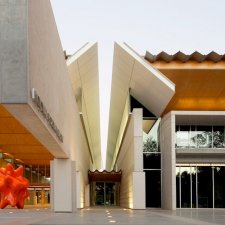My aim in painting is to understand as much about the subject before me and to reproduce it as accurately and truly as I possibly can. I want to interpret what I see as well as I possibly can. That means you have to choose things that are capable of being interpreted. You choose things that are not out of the medium, as we say in painting, but are within the range of your light and dark and your colours.
With all portrait painting, the sitter had to be before me, and every brushstroke had to be the result of an observation taken at the proper distance of that particular sitter. I don’t believe in working apart from the sitter. I think it brings in a sort of dead and unspontaneous sort of effect on the painting and it loses its vitality. And in any case, the visual memory is a short thing; you can’t remember things. If you can have a subject in front of you, you paint much better and much more truly.
There’s one other point I’d like to mention in painting; the importance of choosing something that has moved you, that you really think is beautiful, that has charmed you or you think is magnificent or any adjective you like, but it has to appeal to you strongly if you want to paint it well. Every artist has occasionally to do things that are not quite like that; he has to paint a portrait that probably he didn’t particularly like, the subject and the conditions are bad but he’s got to do it, it’s a job, and that’s never quite as happy. If he has to do a copy of a thing, that isn’t the same either. It’s hard to be spontaneous about that, but when he’s really doing something of his own choice, a sitter who’s not going to pay him anything, not a commission, just a person who he likes the look of, or a little bit of landscape that is beautiful then he does his best works. They might not immediately appeal to people, but they eventually will strike everybody as being the most charming of the things he’s painted.













